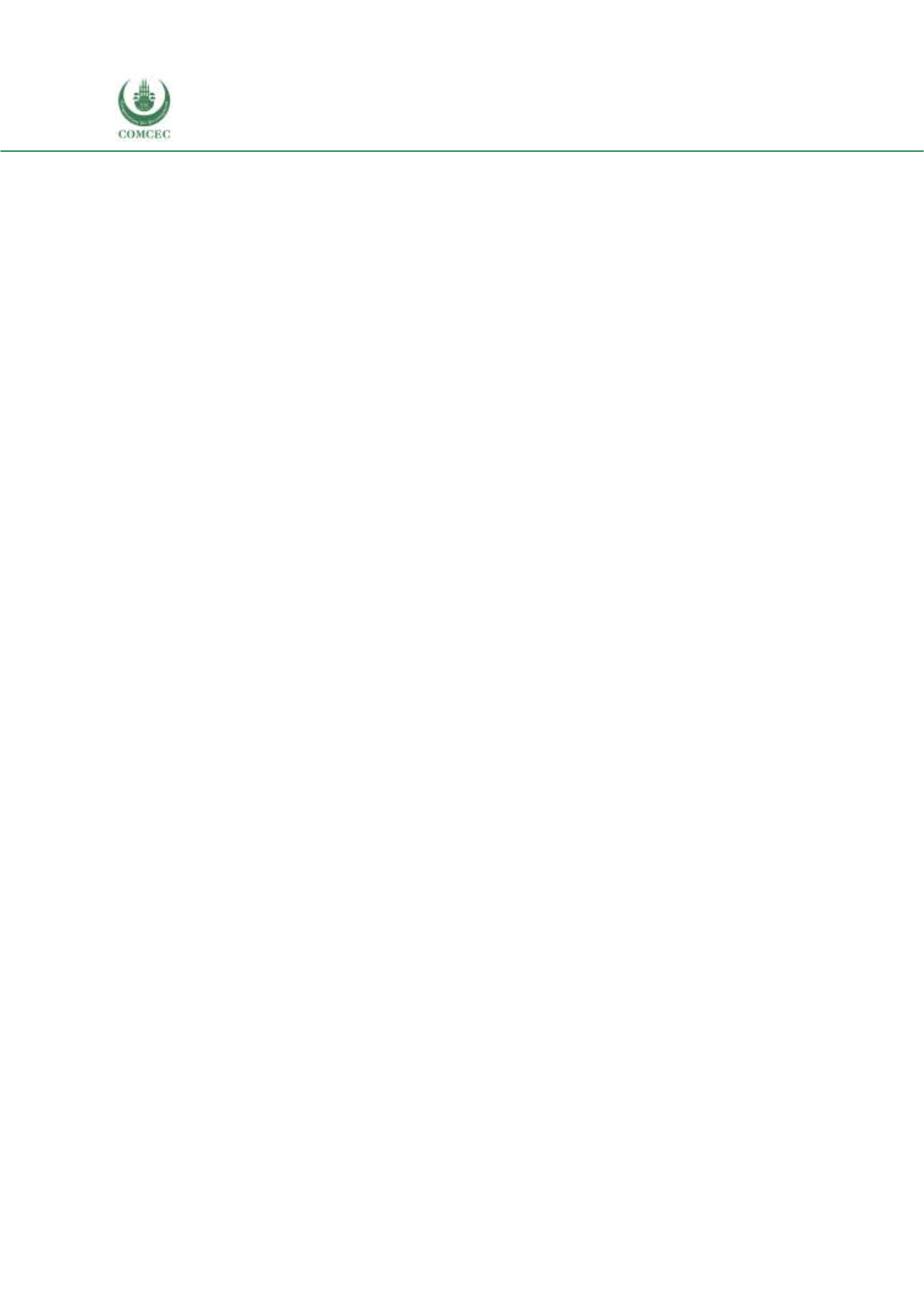

Reviewing Agricultural Trade Policies
To Promote Intra-OIC Agricultural Trade
62
“tobacco” exports originating from Bangladesh (67%), “cigarettes containing tobacco” exports
originating from Turkey (65.2%) and “other fish prepared whole in pieces but not minced”
exports originating fromAlbania (58.6%). Table 3.13 is produced using the data from Table F.12
in Annex F in order to demonstrate products and countries whose export shares to the OIC
market is higher than average yet is faced with high tariff rates from the OIC countries. As seen
in the table, 19 OIC countries out of a total of 57 countries are faced with high tariffs by their
export OIC markets (as compared to the average tariff imposed to them by the OIC countries for
their agricultural exports). The table indicates most countries’ top export products are potential
candidates to be promoted in further development of intra-OIC agricultural trade.
As demonstrated above in Section 3.4.1, “sugar” and “oil seed” exports are facing high intra-OIC
protection rates. The analysis at the product and country level makes it possible to further
explore the product divisions at the product level. For sugar, the highest protection is for “other
beet/cane sugar in solid form, other than flavoured/coloured matter” that are imposed to the
exports originating from Algeria, Azerbaijan, Lebanon and Saudi Arabia where intra-OIC tariff
rates are higher than the tariff rates for agricultural products in general. The shares of the OIC
as a destination for “other beet/cane sugar in solid form, other than flavoured/coloured matter”
exports originating from Algeria, Azerbaijan, Lebanon and Saudi Arabia are 68.4%, 94.9%,
99.5% and 80.3%, respectively, indicating a high potential for welfare improvement with lower
import tariff rates within the OIC market.
For oil seed exports, “sesame seeds” originating fromChad, Mali, Nigeria, Somalia, Togo, Burkina
Faso and Guinea-Bissau are facing higher than average intra-OIC tariffs. The share of the OIC as
a destination of “sesame seeds” exports is highest for Chad (99.1%) followed by Guinea-Bissau
(56.2%), Nigeria (55%), Togo (46.3%), Burkina Faso (23%) and Somalia (16.35). The share of
OIC is lowest for “sesame seed” exports of Mali (0.3%). Another oil seed product facing high tariff
protection within the OIC market is “linseed oil” exports originating from Gambia where the
share of the OIC as a destination is 100%.
Table 3.14 is produced by using the data from Table F.12 in Annex F in order to demonstrate the
situation regarding the 5 potential product divisions as identified above with high growth rate
in OIC imports and low level of intra-regional integration (see, explanations around Figure 3.13
above). Among the selected potential product divisions (sugars, meat, feeding stuff for animals,
oilseeds, live animals), the high tariff rates are largely against exports of sugars and oilseeds,
particularly for “other beet/cane sugar in solid form, other than flavoured/coloured matter”
originating from Algeria, Azerbaijan, Lebanon, Saudi Arabia, Senegal and “Sesame (Sesamum)
seeds” originating from Chad, Mali, Nigeria, Guinea Bissau, Somalia, Sudan, Togo and Burkina
Faso. Considering that sugars and oilseeds are product divisions with high potential for
promoting intra-OIC trade, extra emphasis should be given for the agricultural trade policies for
the countries listed in Table 3.14 since these products are primary export products of these
countries yet they are faced with high tariff rates in the OIC markets.
The mean value of intra-OIC tariff rate differences for the products with higher than average
protection is 14.1% with a standard deviation of 13.3%. In other words, the difference between
“the weighted average tariff rates implemented by OIC members to a country's export of the top
products” and “the weighted average tariff rates implemented by OIC members to the country's
agricultural exports” has an average value of 14.1%. The OIC share for these “higher than
average protection” products as an export destination is 41.3% with a standard deviation of
35.5%. (see Table F.12 in Annex F).


















